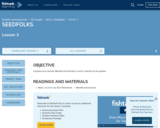
Compare and contrast Wendell and Gonzalo’s uncle’s reaction to the garden.
- Subject:
- English Language Arts
- Reading Literature
- Material Type:
- Homework/Assignment
- Lesson Plan
- Reading
- Author:
- Fishtank Learning
- Date Added:
- 05/21/2021

Compare and contrast Wendell and Gonzalo’s uncle’s reaction to the garden.

Compare and contrast how the garden influences Leona with how others are influenced by the garden.
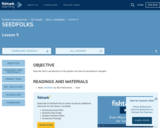
Describe Sam's perspective on the garden and how his perspective changed.

Write a paragraph that explains how one person can impact a community.
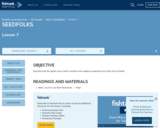
Describe how the garden was a both a positive and negative experience for Virgil and his father.
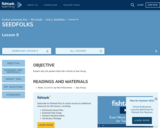
Explain why the garden feels like a family to Sae Young.
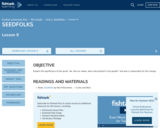
Explain the significance of the quote “we, like our seeds, were now planted in the garden” and who is responsible for the change.
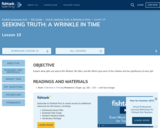
Explain what gifts and advice Mrs Whatsit, Mrs Who, and Mrs Which give each of the children and the significance of each gift.
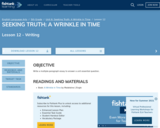
Write a multiple-paragraph essay to answer a unit essential question.
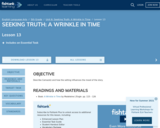
Describe Camazotz and how the setting influences the mood of the story.
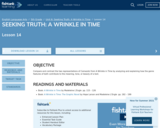
Compare and contrast the two representations of Camazotz from A Wrinkle in Time by analyzing and explaining how the genre features of both contribute to the meaning, tone, or beauty of a text.
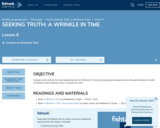
Compare and contrast the two representations of A Wrinkle in Time by analyzing and explaining how the genre features of both contribute to the meaning, tone, or beauty of a text.

The SOLID Start project (Science, Oral Language, and Literacy Development from the Start of School) develops professional development opportunities for K-2 teachers that integrates science and literacy. The project also develops standards-based, integrated science and disciplinary language and literacy curriculum materials designed for K-2 children.
***MUST CREATE A FREE ACCOUNT TO USE MATERIALS.***
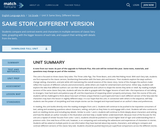
This unit is focused on three classic fairy tales: The Three Little Pigs, The Three Bears, and Little Red Riding Hood. With each fairy tale, students are first exposed to the classic version, familiarizing themselves with the basic plot and lessons. Then students explore the ways authors change setting, characters, and plot while still maintaining the overall essence of the classic story. Some of the changes the authors make reflect the nuances of different cultures and environments, while others are made for entertainment and humor. Either way, students will explore the idea that different authors can use their own perspective and culture to shape the stories they write or retell. By reading multiple versions of the same classic fairy tale, students will also be able to grapple with the bigger lessons of each tale—the importance of not talking to strangers, how hard work and patience pay off, and the importance of respecting others’ property and privacy. Over the course of the unit, students will be challenged to think about how each of these unique themes is portrayed and how in each different version of the fairy tale the characters may learn the lesson in slightly different ways. It is our hope that this unit, in connection with others in the sequence, will help students see the power of storytelling and how simple stories can be changed and improved based on an author’s ideas and preferences.
In reading, this unit builds directly onto the reading strategies from unit 2. Students will continue to be pushed to be inquisitive consumers of text, asking and answering questions about characters, setting, and plot as they listen to and engage with a text. Students will also continue to work on retelling stories and including key details. Similar to units 1 and 2, students will continue to think deeply about characters and setting and how the details an author includes in the illustration and text help a reader better understand both. Because most of the focuses for this unit are a repeat of similar focuses from units 1 and 2, students should be pushed to a much higher level of rigor and understanding than in previous units. One new focus of this unit, however, is on comparing and contrasting the adventures and experiences of characters in stories. Students will be asked at multiple points to use information they have learned about key events, characters, and setting to compare and contrast different versions of the classic fairy tale. Students should be pushed beyond just superficial comparisons across the different stories. At the end of the unit, students will also have a chance to retell and act out the different fairy tales, putting their own “artistic” spin on the fairy tale.
In writing, students will continue to write daily in response to the text. In unit 2, students began to write answers that correctly answered the questions using facts. In this unit, students will be pushed to continue to focus on correct answers that may show some level of inferential or critical thinking. Students will also begin to learn how to include details from the text in their answers. At this point in the year, it is not important that students have the best evidence but rather that they are including some details that support the answer to the question in one way or another. Structure and grammar feedback during this unit should be based on assessment data from units 1 and 2.
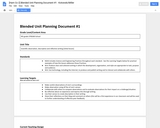
Description: This lesson was created for a 9th grade integrated biology/English classroom with a focus on out door learning. In this lesson, students will practice their scientific observation skills and reflect on their experience in this out door observation activity. Students will also take these initial observations and extend them in their writing as they explore various forms of figurative language. Finally, the reflections will be posted on their blog for their classmates to view and respond to as we begin to practice feedback on each other's writing.
Note: Before beginning this unit, decide on where students will house their blog posts to allow for feedback from peers. Keep in mind the time students might need to spend developing and working with the blog before actually posting to it. A Google Classroom discussion post may work as well, or even better. Additionally, this lesson also addresses the NGSS Science & Engineering Practices.
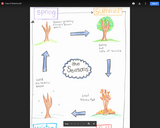
K Seasons Anchor Chart CKLA
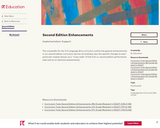
The crosswalks for the 3-5 Language Arts curriculum outline the general enhancements in our second edition curriculum (across all modules), plus the specific changes to each particular module (shown as a "cross-walk" of the first vs. second edition performance task and six on-demand assessments).
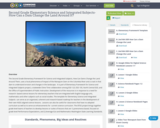
The Second Grade Elementary Framework for Science and Integrated Subjects, How Can Dams Change the Land Around Them, uses a local phenomena of impact of the Wanapum Dam on the Columbia River and a crack in that dam to understand erosion and changes in the landscape.
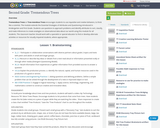
Tremendous Trees or Tree-mendous Trees encourages students to use inquisitive and creative behaviors, to think like a scientist. The module extends the Essential Strategies of Attributes and Questioning introduced in Kindergarten and First Grade. Students use questions to approach problems and identify attributes to sort, classify, and make inferences to create analogies on observational data about our world using this module for all students. The classroom teacher should work with a specialist or special educator to find or develop alternate activities or resources for visually impaired students, where appropriate.

Assign leveled books for informational writing. The students will read an assigned biographical text in Epic Books. In SeeSaw, the students would respond to questions about biographical research. The students will use technology for research and response.